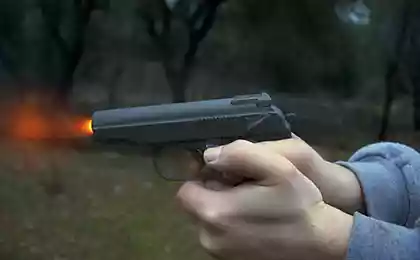1482
The Magic Excalibur
Excalibur - Sword of King Arthur, which is often attributed to the amazing and magical properties. Today we tell the legend about him words of Thomas Malory, author of the famous "Death of Arthur".
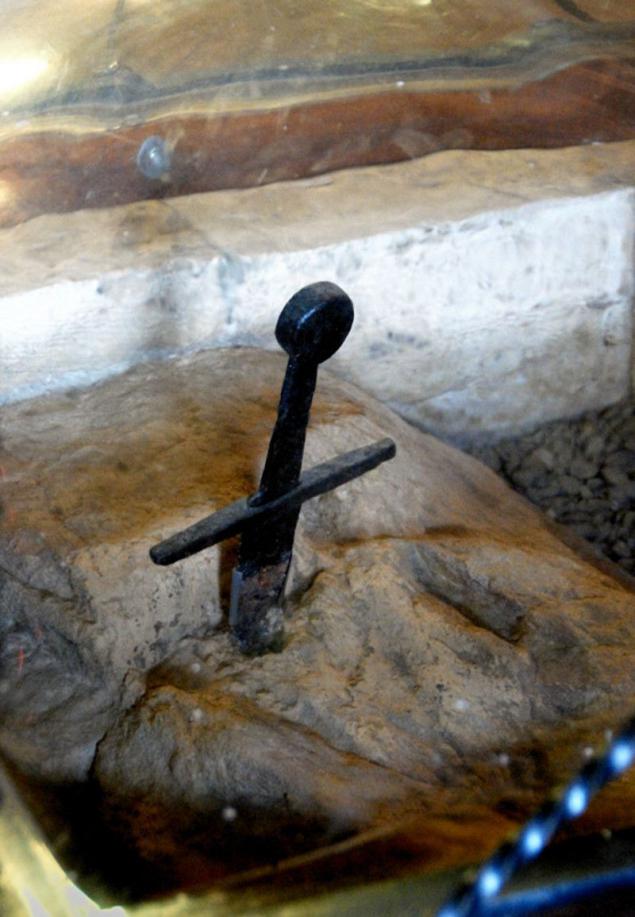
"... And then, in the greatest of all churches of London - whether it was St. Paul's Cathedral, in the French book does not say - well in advance of the day all the estates of the realm gathered for prayer. And when moved vigil and the early Mass, suddenly we beheld the people in the courtyard of the temple against the main altar, a large rock on the four corners, like marble tomb, in the middle on it - like a steel anvil a foot high above, and beneath it - a wonderful sword naked and around him the golden letters "Who will pull this sword from the anvil, he is by birth a king over all the earth English».
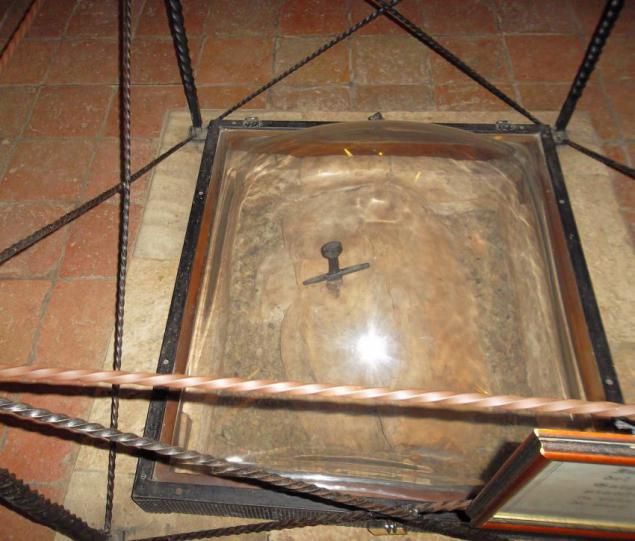
odivilis people and told about the archbishop ... »
"... Then they went [people] to the archbishop and told him how the sword was extracted and by whom. And on the day of Epiphany came to all the barons, in order to try again, who wish to pull out the sword, and in the face of one of Arthur just managed to pull it out.
Many lords then became angry and said that they focus a shame and throughout the kingdom, if they rule the low-born youngster. And this then broke feud that has been decided to postpone the matter to the Presentation of the Lord, and then all the barons move in again to the same pore dispatched ten knights day and night to guard the sword pitched a tent on the stone and the sword and the five were detained ... "Note in passing, that was the one Thomas Malory, author of the book from which the quotation is taken The above.
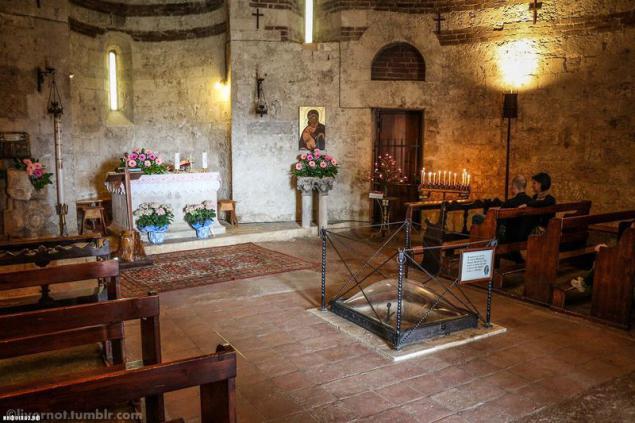
It was a knight of the XVI century, who was sitting at a robbery in New Geytskoy prison in London. He, fortunately, was given the opportunity to engage in a happy literary activities there.
His famous work «Le Mort D'Arthure» («The Death of Arthur") he called "short plagued with French books," even though, in fact, it was not a translation, namely foreign-language retelling and local literary works. Prisoner of the New Gate, he could go to the nearby library of the monastery of the Order of St. Francis. It is expected that the cumulative amount of the literature Mallory - basically, by the way, poetry, - five times the volume of the book written by himself.
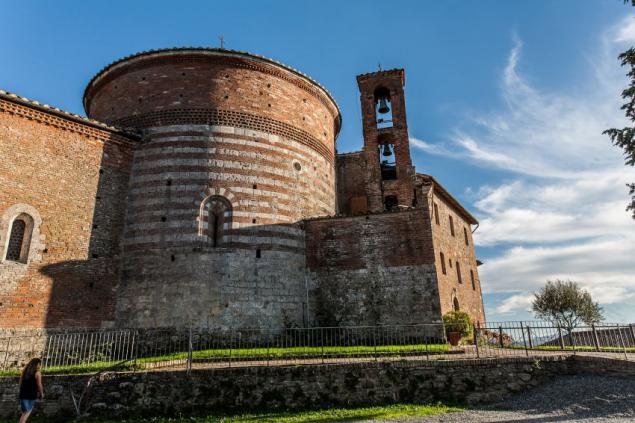
Among his sources were almost certainly Chretien de Troyes (Chretien de Troyes), French poet of the XII century, and Geoffrey of Monmouth (aka Jeffrey from Monemuty), author of "History of Britons" and "Life of Merlin", also dating from the XII century.
Note: at the Geoffrey legend of the sword in the stone is not (at least in the version to which reference is made), but there she was at the Chretien de Troyes. It can be quite significant, from a geographical point of view.
Whatever it was, but so far prevailed the idea of Celtic origin of the legend of the sword stuck in the stone (or, according to Mallory - a hard place, standing on a rock).
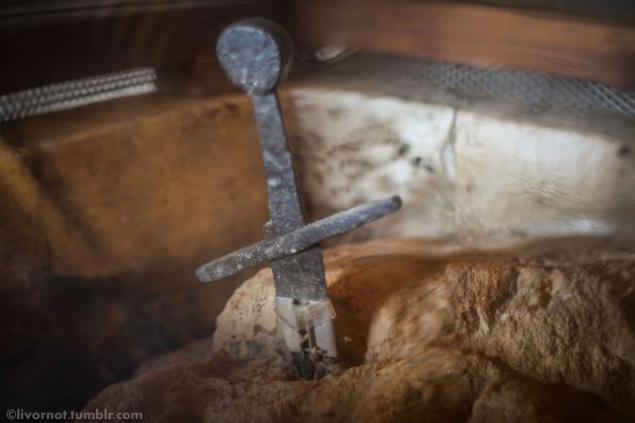
The legendary sword in the stone, which is often associated with the legend of King Arthur, there. It is not in any Avalon, of course, and in Italy. It can be seen in the chapel of Montesiepi, near Saint Galgano Abbey in Chiusdino, Tuscany.
The story is this.
Thirty kilometers south-east of Siena is dilapidated Abbey of San Galgano, which once belonged to the Order of Cistercians (Order adjoining the Benedictines). The abbey was built just in the XII century, in memory of the saint in the world bore the name Galgano Guidotti.
This led Guidotti very dissolute life, was arrogant, sensuality and much to all sorts of violent crime. But one day he had a vision of the Archangel Michael, and Guidotti, throwing everything became a recluse, and after his death - in 1181 - was canonized.
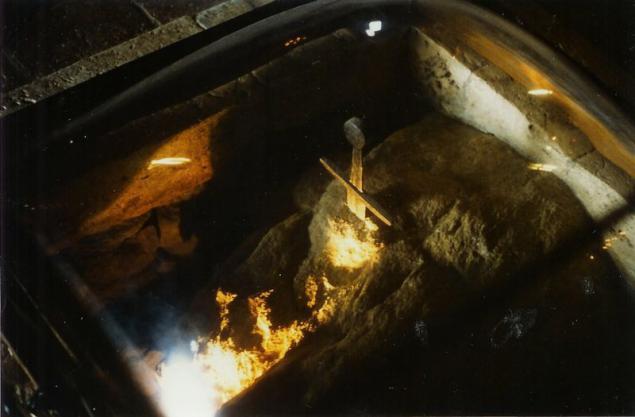
About him say that, as a token of his renunciation of the world - and the war - Guidotti plunged his sword in the stone, which "moved like oil." As a result, only a stone stick handle, but three or four centimeters of the blade, forming a cross.
According to legend, after the death of Galgano, countless people are trying to steal the sword. In the chapel are also stored the mummified hand of one of the thieves, who left after he was attacked by a pack of wolves, which also according to legend, was guarded by the sword.
The historian-medievalist Moiragi Mario (Mario Moiraghi) believes that this tradition was the basis of the Arthurian cycle. In favor of this indirectly indicates the estimated time the appearance of works that formed the basis of later retellings of the Arthurian story.
Chrétien de Troyes wrote his poem "Perceval", which describes the history of the sword in the stone in 1190. Between 1210 and 1220 years was created a German version of the myth of the Holy Grail (also mandatory attribute Arthurian cycle). And its author - Wolfram von Eschenbach (Wolfram von Eschenbach) also focused its attention on Perceval (Parzival).
As another proof of evidence is Moiragi Dionisia, mother of St. Galgano (or Galgani) to the board of cardinals, the question of the canonization of the deceased in 1190.
According Moiragi, Dionisia outlined "all the main components of the myth of the Round Table": knight, overcomes all obstacles on the way to his ideal, his search for the Holy Grail (though, in a vision Galgano was not the bowl from which the drink Christ at the Last Supper, and a text whose value he could not understand); and in the center of it all - the sword. "Knight" of history brought by traders from Persia, it was at this time were very popular in Italy, and particularly - in Tuscany.
Moiragi have found an explanation, where did the image of the "Round Table", which was seated the knights of Arthur. Round was a chapel, erected around the sword in the stone. A characteristic detail, by the way: at Mallory around the stone was erected tent, where day and night guard carried ten chosen knights.
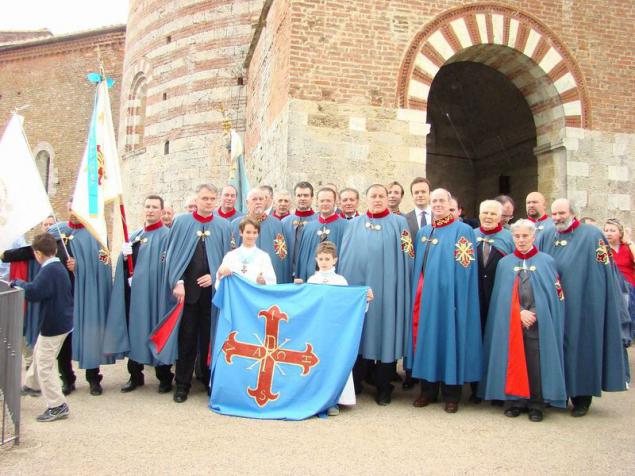
According Moiragi, later writers could change everything in the name Galgano Galvan - so that, as a result, the light appeared Gawain, the son of Morgause and Lot of Orkney, Arthur's nephew and one of his best knights. In one of the scenes Gawain even acted as the envoy of the King of Britain to Rome.
Sword Galgano experts studied. Although the sword was considered a fake, for many years, recent studies have shown that the composition of metal and style sword fully corresponds to the period from 1100 to the early 1200s. It really is a metal sword forged, apparently, just at the time when he lived a legendary saint. So, he appeared before the Arthurian stories retold Chretien de Troyes and others. But this does not mean that the Celts could not have similar stories.
And finally: the study of the Tuscan sword in the stone, it turned out that underneath there a certain emptiness. Church officials, however, have not given permission for it to move the stone, so the scientists do not know what hides beneath a sword in the stone.
Today, it is kept under protective glass, all in stone, in the chapel, and available for everyone.
By the way, is searched for information about this sword, found another:
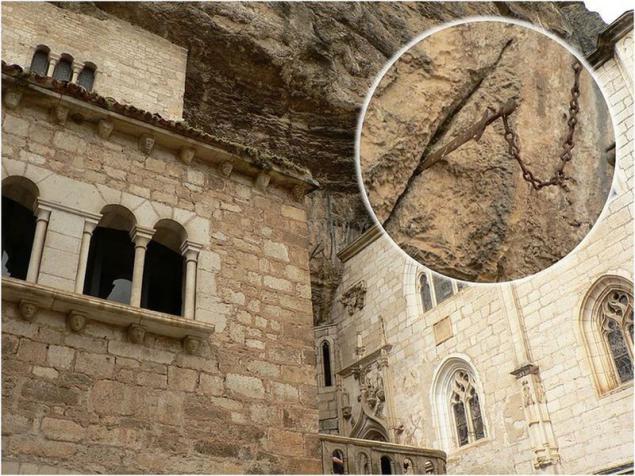
Source: artarion.livejournal.com

"... And then, in the greatest of all churches of London - whether it was St. Paul's Cathedral, in the French book does not say - well in advance of the day all the estates of the realm gathered for prayer. And when moved vigil and the early Mass, suddenly we beheld the people in the courtyard of the temple against the main altar, a large rock on the four corners, like marble tomb, in the middle on it - like a steel anvil a foot high above, and beneath it - a wonderful sword naked and around him the golden letters "Who will pull this sword from the anvil, he is by birth a king over all the earth English».

odivilis people and told about the archbishop ... »
"... Then they went [people] to the archbishop and told him how the sword was extracted and by whom. And on the day of Epiphany came to all the barons, in order to try again, who wish to pull out the sword, and in the face of one of Arthur just managed to pull it out.
Many lords then became angry and said that they focus a shame and throughout the kingdom, if they rule the low-born youngster. And this then broke feud that has been decided to postpone the matter to the Presentation of the Lord, and then all the barons move in again to the same pore dispatched ten knights day and night to guard the sword pitched a tent on the stone and the sword and the five were detained ... "Note in passing, that was the one Thomas Malory, author of the book from which the quotation is taken The above.

It was a knight of the XVI century, who was sitting at a robbery in New Geytskoy prison in London. He, fortunately, was given the opportunity to engage in a happy literary activities there.
His famous work «Le Mort D'Arthure» («The Death of Arthur") he called "short plagued with French books," even though, in fact, it was not a translation, namely foreign-language retelling and local literary works. Prisoner of the New Gate, he could go to the nearby library of the monastery of the Order of St. Francis. It is expected that the cumulative amount of the literature Mallory - basically, by the way, poetry, - five times the volume of the book written by himself.

Among his sources were almost certainly Chretien de Troyes (Chretien de Troyes), French poet of the XII century, and Geoffrey of Monmouth (aka Jeffrey from Monemuty), author of "History of Britons" and "Life of Merlin", also dating from the XII century.
Note: at the Geoffrey legend of the sword in the stone is not (at least in the version to which reference is made), but there she was at the Chretien de Troyes. It can be quite significant, from a geographical point of view.
Whatever it was, but so far prevailed the idea of Celtic origin of the legend of the sword stuck in the stone (or, according to Mallory - a hard place, standing on a rock).

The legendary sword in the stone, which is often associated with the legend of King Arthur, there. It is not in any Avalon, of course, and in Italy. It can be seen in the chapel of Montesiepi, near Saint Galgano Abbey in Chiusdino, Tuscany.
The story is this.
Thirty kilometers south-east of Siena is dilapidated Abbey of San Galgano, which once belonged to the Order of Cistercians (Order adjoining the Benedictines). The abbey was built just in the XII century, in memory of the saint in the world bore the name Galgano Guidotti.
This led Guidotti very dissolute life, was arrogant, sensuality and much to all sorts of violent crime. But one day he had a vision of the Archangel Michael, and Guidotti, throwing everything became a recluse, and after his death - in 1181 - was canonized.

About him say that, as a token of his renunciation of the world - and the war - Guidotti plunged his sword in the stone, which "moved like oil." As a result, only a stone stick handle, but three or four centimeters of the blade, forming a cross.
According to legend, after the death of Galgano, countless people are trying to steal the sword. In the chapel are also stored the mummified hand of one of the thieves, who left after he was attacked by a pack of wolves, which also according to legend, was guarded by the sword.
The historian-medievalist Moiragi Mario (Mario Moiraghi) believes that this tradition was the basis of the Arthurian cycle. In favor of this indirectly indicates the estimated time the appearance of works that formed the basis of later retellings of the Arthurian story.
Chrétien de Troyes wrote his poem "Perceval", which describes the history of the sword in the stone in 1190. Between 1210 and 1220 years was created a German version of the myth of the Holy Grail (also mandatory attribute Arthurian cycle). And its author - Wolfram von Eschenbach (Wolfram von Eschenbach) also focused its attention on Perceval (Parzival).
As another proof of evidence is Moiragi Dionisia, mother of St. Galgano (or Galgani) to the board of cardinals, the question of the canonization of the deceased in 1190.
According Moiragi, Dionisia outlined "all the main components of the myth of the Round Table": knight, overcomes all obstacles on the way to his ideal, his search for the Holy Grail (though, in a vision Galgano was not the bowl from which the drink Christ at the Last Supper, and a text whose value he could not understand); and in the center of it all - the sword. "Knight" of history brought by traders from Persia, it was at this time were very popular in Italy, and particularly - in Tuscany.
Moiragi have found an explanation, where did the image of the "Round Table", which was seated the knights of Arthur. Round was a chapel, erected around the sword in the stone. A characteristic detail, by the way: at Mallory around the stone was erected tent, where day and night guard carried ten chosen knights.

According Moiragi, later writers could change everything in the name Galgano Galvan - so that, as a result, the light appeared Gawain, the son of Morgause and Lot of Orkney, Arthur's nephew and one of his best knights. In one of the scenes Gawain even acted as the envoy of the King of Britain to Rome.
Sword Galgano experts studied. Although the sword was considered a fake, for many years, recent studies have shown that the composition of metal and style sword fully corresponds to the period from 1100 to the early 1200s. It really is a metal sword forged, apparently, just at the time when he lived a legendary saint. So, he appeared before the Arthurian stories retold Chretien de Troyes and others. But this does not mean that the Celts could not have similar stories.
And finally: the study of the Tuscan sword in the stone, it turned out that underneath there a certain emptiness. Church officials, however, have not given permission for it to move the stone, so the scientists do not know what hides beneath a sword in the stone.
Today, it is kept under protective glass, all in stone, in the chapel, and available for everyone.
By the way, is searched for information about this sword, found another:

Source: artarion.livejournal.com























